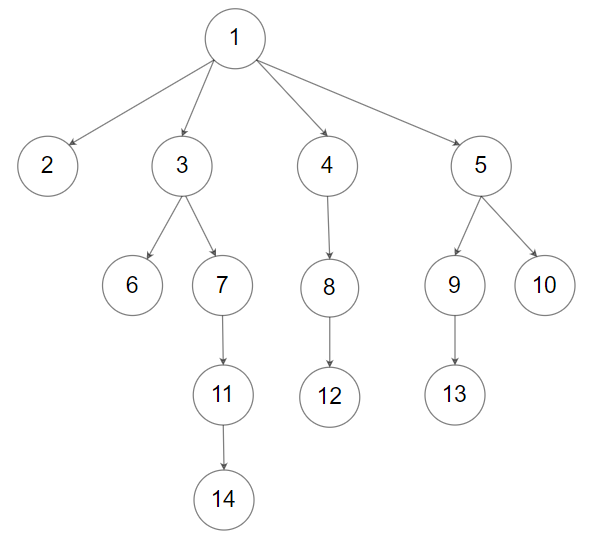559.Maximum Depth of N-ary Tree¶
Tags: Easy Tree
Links: https://leetcode.com/problems/maximum-depth-of-n-ary-tree/
Given a n-ary tree, find its maximum depth.
The maximum depth is the number of nodes along the longest path from the root node down to the farthest leaf node.
Nary-Tree input serialization is represented in their level order traversal, each group of children is separated by the null value (See examples).
Example 1:

Input: root = [1,null,3,2,4,null,5,6]
Output: 3
Example 2:

Input: root = [1,null,2,3,4,5,null,null,6,7,null,8,null,9,10,null,null,11,null,12,null,13,null,null,14]
Output: 5
Constraints:
- The depth of the n-ary tree is less than or equal to
1000. - The total number of nodes is between
[0, 10^4].
/*
// Definition for a Node.
class Node {
public:
int val;
vector<Node*> children;
Node() {}
Node(int _val) {
val = _val;
}
Node(int _val, vector<Node*> _children) {
val = _val;
children = _children;
}
};
*/
class Solution {
public:
int maxDepth(Node* root) {
std::ios_base::sync_with_stdio(false);
cin.tie(NULL);
cout.tie(NULL);
if (!root) return 0;
auto &v = root -> children;
int res = 0;
for (auto e : v) {
res = max(res, maxDepth(e));
}
return 1 + res;
}
};
迭代解法:
/*
// Definition for a Node.
class Node {
public:
int val;
vector<Node*> children;
Node() {}
Node(int _val) {
val = _val;
}
Node(int _val, vector<Node*> _children) {
val = _val;
children = _children;
}
};
*/
class Solution {
public:
int maxDepth(Node* root) {
std::ios_base::sync_with_stdio(false);
cin.tie(NULL);
cout.tie(NULL);
if (!root) return 0;
queue<Node *> q;
q.push(root);
int level = 0;
while (!q.empty()) {
int n = q.size();
++level;
for (int i = 0; i < n; ++i) {
Node *tmp = q.front(); q.pop();
auto &v = tmp -> children;
for (auto e : v) q.push(e);
}
}
return level;
}
};